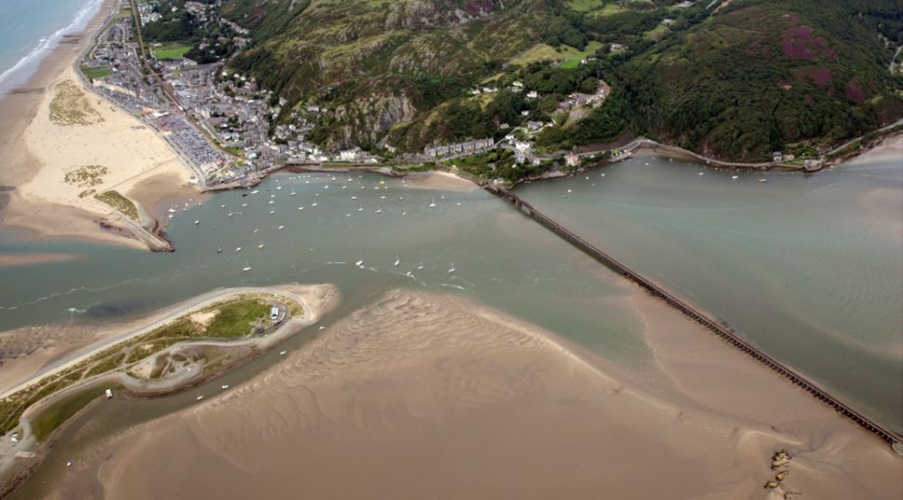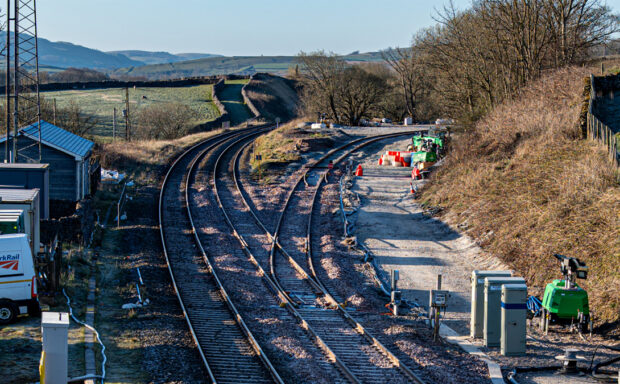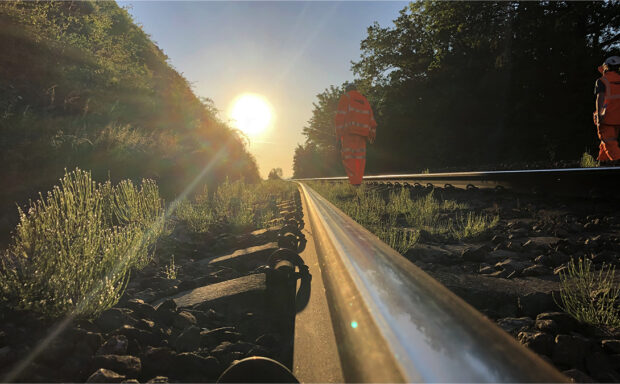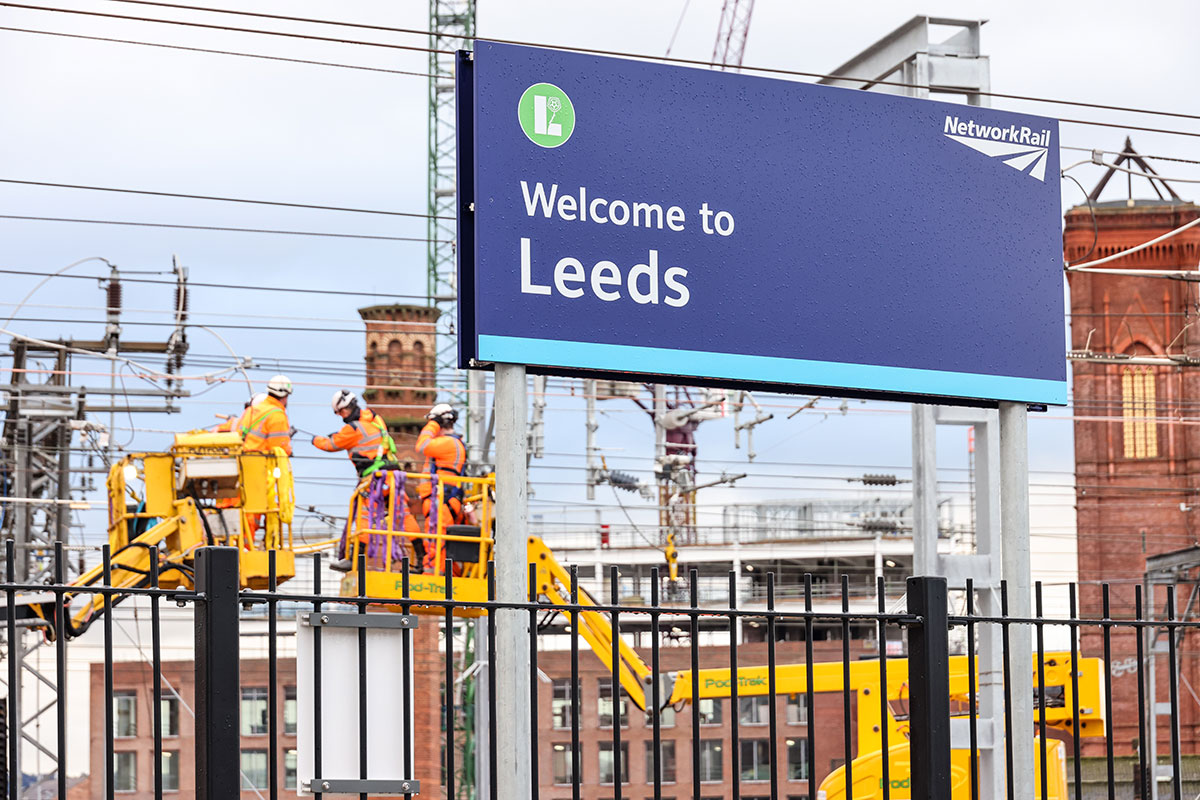On tonight’s The Architecture the Railways Built railway historian Tim Dunn takes us to Barmouth Viaduct – Wales’ only major timber railway bridge still in use.
Watch Tim on his new series on Yesterday on 16 June to Grade II listed bridge in North Wales, which we’re giving its biggest ever refurbishment to ensure it remains safe and reliable for train services, and to protect this piece of heritage for the Cambrian Coast Line.
The £25m upgrade from the autumn will include replacing a large number of its timber and metal elements of the viaduct, as well as replacing the entire length of track.
Tim told Network Rail: “We chose to feature Barmouth Bridge because it’s got a really interesting story, and because I know it so well. Not only is it one of the biggest wooden viaducts in Britain (and that we have massive railway bridges still made from timber in 2020 may surprise some) – but it also used to have a drawbridge section to let boats through!
“What impresses me most is the ongoing maintenance of such a vast wooden structure in an estuary. It would have probably been cheaper in the longer term had the Victorian engineers chosen not to build in wood – but here we are.
“You don’t quite realise its scale until you try to cross it on the footpath; and then, when a train passes, the whole structure reverberates. Timing your trip over it as a pedestrian makes a good walk into a great one!”
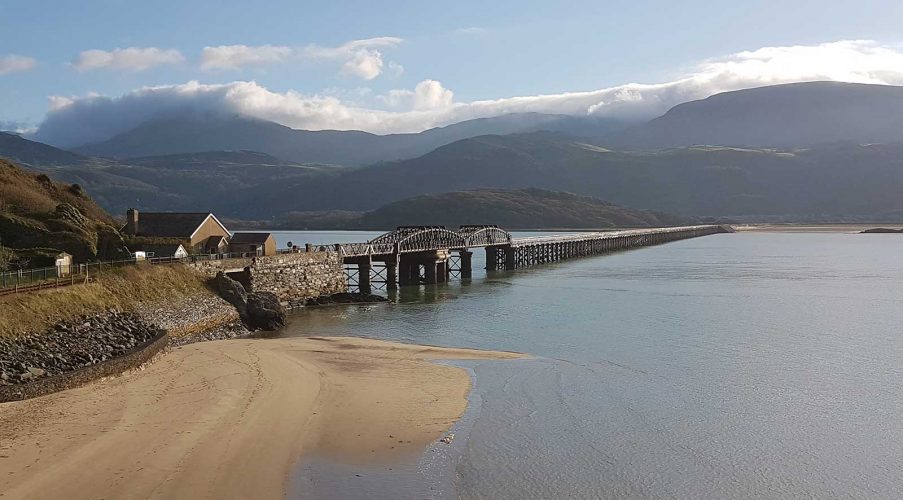
Tim said: “Its refurbishment is so important – and I was so pleased to read about the £25m investment. It’s also so important to the people who live along the Cambrian Line; for the tourist trade, and for local people needing connectivity across North Wales.
“The Cambrian Line is one of the greatest scenic railway rides in Britain; I never tire of it and the bridge’s refurbishment means that millions more passengers can enjoy it all for years to come.”
Bill Kelly, a route director at Network Rail, said in May: “We are investing £25m to give Barmouth Viaduct the biggest upgrade in its history, protecting our industrial heritage and ensuring this vital transport link can continue to serve local people and visitors, when the time comes, for generations to come.
“We have been working closely with Cadw [the Welsh government’s historic environment protection service], Gwynedd County Council and other stakeholders over several years to develop our plans. I want to reassure the local community that we have adapted these plans to make sure we are following Government guidelines during the covid-19 pandemic.”
Simon Hart, Secretary of State for Wales, said: “The Barmouth Viaduct is an iconic part of Wales’ railway heritage and I am pleased that it is benefitting from a portion of the £2bn UK Government investment in the Wales and Borders network to preserve and upgrade it.
“The upgrades by Network Rail will secure the important link between Machynlleth and Pwllheli and protect a popular part of the Wales coastal route.
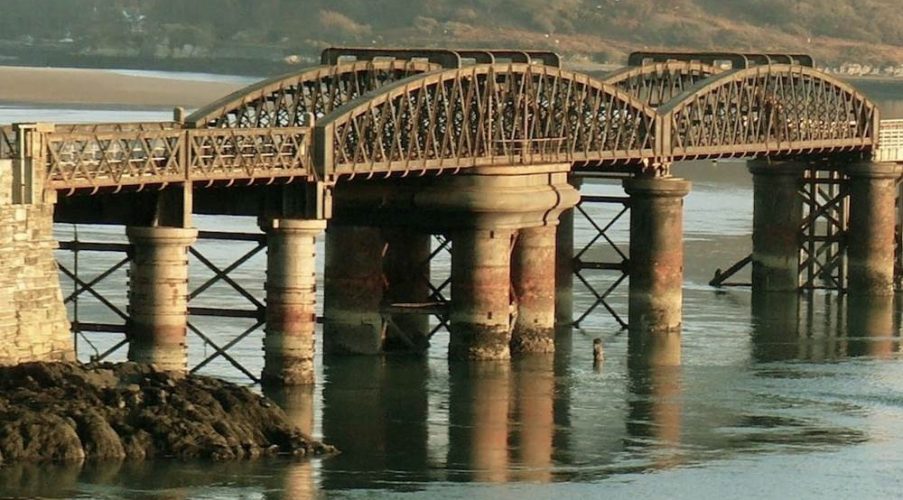
“Together with the £8.5 billion investment in Great Western Rail’s Intercity Express trains and electrification between London Paddington and south Wales, and upgrades to North Wales railway lines, the UK Government is delivering improvements in rail infrastructure and improving journeys for passengers in every part of Wales.”
To reduce the impact of the work, it has been carefully planned to take place over three years, with three shorter full closures of the bridge rather than one longer full closure. The first closure is planned for this autumn, when the restoration of the timber elements will begin. Preparation work will begin in June.
Tim’s visit to Barmouth in the latest episode follows his trip along the nearby Ffestiniog Railway, which stretches from the harbour in Porthmadog, Gwynedd to historic slate mining town Blaenau Ffestiniog in Merionethshire.
Read more:
The Architecture the Railways Built – Severn Bridge Junction
The Architecture the Railways Built – London St Pancras International
The Architecture the Railways Built – Ffestiniog Railway
The Architecture the Railways Built – Ribblehead Viaduct
Preserving railway history: five things saved by Network Rail
Incredible Stephenson railway history rediscovered
